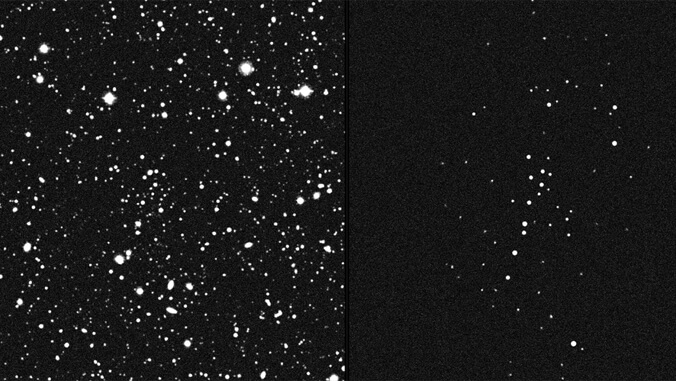
A group of astronomers using three telescopes in Hawaiʻi have discovered a small, very old star system orbiting around our galaxy. The star system, named Ursa Major III/ UNIONS 1 or UMa3/U1, is incredibly faint and has the least mass of any Milky Way satellite ever found. It might also be one of the most dark matter-dominated systems known.
UMa3/U1 is made up of about 60 stars, all more than 10 billion years old, held together by their own gravity, and possibly even by dark matter. The team of researchers leading the study used the W. M. Keck Observatory and Canada-France-, Hawaiʻi Telescope (CFHT) on Maunakea and the University of Hawaiʻi Institute for Astronomy (IfA) Panoramic Survey Telescope and Rapid Response System or Pan-STARRS on Haleakalā.
“This important discovery of the darkest dwarf galaxy was only possible with Pan-STARRS’ ongoing effort to systematically survey the sky over and over again,” said Ken Chambers, IfA astronomer and principal investigator of Pan-STARRS. “We do this primarily to find potentially hazardous near Earth asteroids, but we also use the data to build up an ever deeper image of the universe and by combining this data with the other participating UNIONS (Ultraviolet Near Infrared Optical Northern Survey) surveys, we enable many kinds of discoveries from the solar system to the edge of the visible universe.”
Findings were published in The Astrophysical Journal by astronomers from the University of Victoria and Yale University.
Celestial mystery
Located in the Ursa Major constellation, UMa3/U1 is about 30,000 light-years from the Sun. It weighs about 16 times more than the Sun, however it’s still much lighter than the smallest known suspected dwarf galaxy. Scientists first found the star system using data from the UNIONS survey conducted by Pan-STARRS and CFHT.
For a more detailed analysis, they turned to the Keck Observatory’s Deep Imaging Multi-Object Spectrograph, confirming UMa3/U1 is a tightly bound system, either a dwarf galaxy or a star cluster.
Further observations are required to determine if this star system is dominated by dark matter, which would support a key prediction in the leading theory of the universe’s origin. This theory suggests that during the formation of galaxies like the Milky Way, they attracted hundreds of satellite star systems through gravitational pull, which continue to orbit galaxies to this day.

